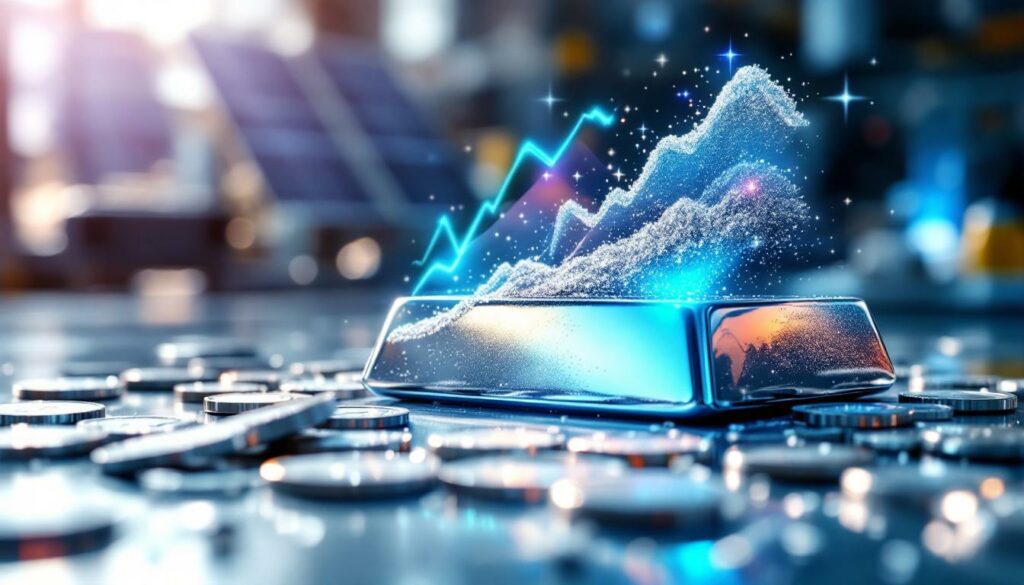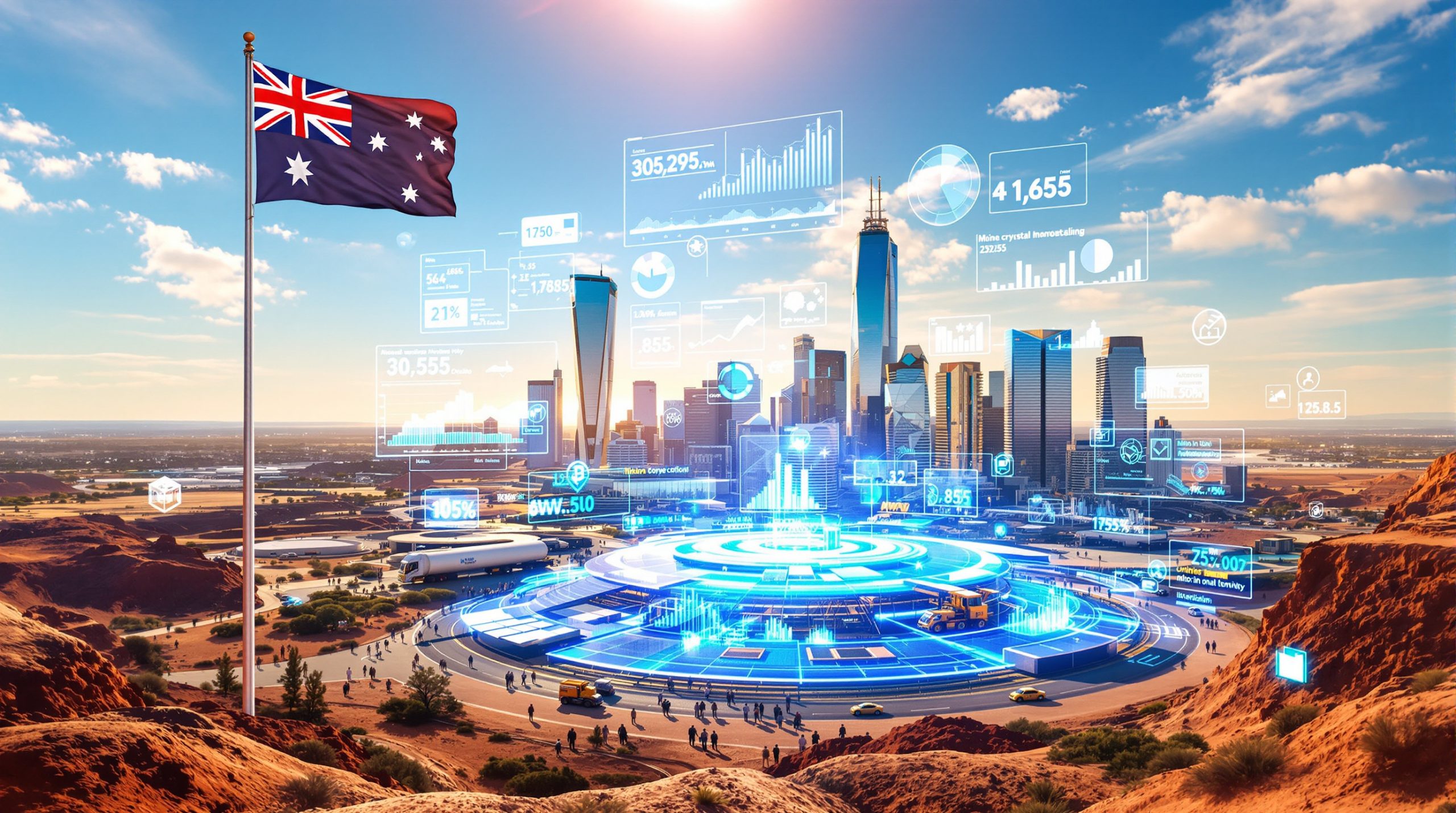What Are the Silver Price Predictions for 2025?
Silver's impressive performance in 2024 has investors wondering what's next for this precious metal. With prices breaking through the $30 ceiling for the first time in a decade, market analysts are providing increasingly bullish forecasts for 2025 and beyond.
The consensus among financial institutions points to significant price appreciation, with most silver price predictions falling in the $38-40 range for 2025. These projections are supported by persistent supply deficits, growing industrial applications, and silver's dual role as both an industrial metal and monetary asset.
How Did Silver Perform in 2024?
Record-Breaking Price Movement
Silver experienced remarkable growth in 2024, with prices surging approximately 40% by October. This impressive rally outpaced even gold's strong performance, pushing silver to reach $35 per ounce before settling around $32 by mid-December.
The metal's ability to break through long-standing resistance levels surprised many market participants, as silver hadn't traded consistently above $30 since 2013. This breakthrough signaled a potential shift in market sentiment and technical positioning.
Factors Behind the 2024 Rally
- Robust industrial demand across multiple sectors, particularly in electronics and green energy
- Second consecutive year of substantial supply deficits (184.3 million ounces in 2023)
- Rapidly declining global inventories, reaching multi-year lows
- Renewed safe-haven buying amid persistent inflation concerns
- Escalating geopolitical tensions worldwide, particularly in key silver-producing regions
The combination of these factors created a perfect storm for silver prices, with both investment and industrial demand surging simultaneously while supply remained constrained.
What Are Analysts Predicting for Silver in 2025?
Major Financial Institution Forecasts
Leading financial institutions have released their silver price predictions for 2025, based on comprehensive macroeconomic analysis, technical indicators, and supply-demand fundamentals:
| Analyst/Firm | Silver Price Target | Time Frame |
|---|---|---|
| Citigroup | $40 | 2025 |
| JP Morgan | $38 | 2025 |
| Saxo Bank | $40 | 2025 |
| World Bank | 7% rise | 2025 |
| PricePrediction.net | $38.87 | End of 2025 |
| InvestingHaven | $48.20 – $50.25 | 2025 |
These predictions reflect growing confidence in silver's fundamentals, with most analysts citing the persistent supply deficit and increasing industrial applications as primary drivers.
Expert Analyst Perspective
GoldSilver's Lead Analyst Alan Hibbard projects: "I'm expecting silver to return about 25% in 2025, putting it around $40. And I'm expecting 2026 to be the year that silver reaches an all-time high above $52.50."
Hibbard's analysis is particularly noteworthy as it considers both short-term price catalysts and longer-term structural trends in the silver market, including the metal's critical role in the green energy transition.
Long-Term Silver Price Projections
Some analysts are taking an even more bullish stance on silver's long-term potential:
| Analyst/Firm | Silver Price Target | Time Frame |
|---|---|---|
| Alan Hibbard | $52.50+ | 2026 |
| InvestingHaven | $75 | 2027 |
| InvestingHaven | Peak price: $80 | 2030 |
These longer-term projections factor in the accelerating adoption of silver-intensive technologies like solar panels and electric vehicles, as well as potential monetary demand from both retail and institutional investors.
Disclaimer: Price predictions represent analysts' opinions based on current market conditions and historical trends. Actual prices may vary significantly due to unforeseen economic, political, or market developments. Investors should conduct their own research before making investment decisions.
What Key Factors Will Drive Silver Prices in 2025?
Will Industrial Demand Continue to Grow?
The expanding use of silver in various industrial applications represents a significant driver for future demand. This trend is particularly evident in green technologies:
- Solar energy could consume approximately 85-98% of current global silver reserves by 2050, according to projections based on renewable energy adoption targets
- Each solar panel contains approximately 20 grams of silver, with efficiency improvements potentially increasing this amount
- The automotive sector demand is accelerating due to:
- Greater vehicle sophistication requiring more electrical components
- Rising electrification of powertrains (each EV uses 25-50 grams of silver)
- Ongoing infrastructure investments (charging stations, etc.)
Beyond green energy, silver's exceptional electrical conductivity, thermal properties, and antimicrobial qualities continue to make it irreplaceable in numerous applications, from electronics to medical devices.
How Will Monetary Policy Impact Silver?
Central bank decisions, particularly regarding interest rates, will play a crucial role in silver's 2025 performance:
- Expected rate cuts throughout 2025 could provide significant support for precious metals
- Lower interest rates decrease the opportunity cost of holding non-yielding assets like silver
- This makes silver more attractive compared to interest-bearing investments such as bonds
- Historical analysis shows silver typically performs well during easing cycles, with average gains of 18-22% in the 12 months following the first rate cut
The anticipated transition from a high-rate environment to a more accommodative monetary policy could be a major tailwind for silver prices in 2025.
Is Investment Demand Increasing?
Growing interest from institutional investors and even central banks could significantly boost silver prices:
- Russia's recent announcement to acquire $535 million worth of silver over three years marks a historic shift
- This represents the first time any central bank has explicitly included silver in its purchasing plans during the current precious metals bull market
- ETF holdings of silver have begun to recover after drawdowns in 2021-2023
- Physical investment demand for silver coins and bars has remained robust, with premiums elevated above spot prices
The potential for additional central banks to follow Russia's lead could introduce an entirely new demand category into an already tight market.
How Severe Are Supply Constraints?
The silver market faces significant supply challenges heading into 2025:
- Total silver supply has declined over the past decade, dropping from 1.07 billion ounces in 2010 to an estimated 1.03 billion ounces in 2024
- The market has experienced consistent supply deficits since 2021
- 2023 recorded a substantial shortfall of 184.3 million ounces
- 2024 consumption is projected to reach 1.21 billion ounces against supply of only 1.03 billion ounces
- This creates a projected deficit of 182 million ounces for 2024
- Primary silver mines (where silver is the main product) account for only about 25-30% of global production, with the remainder coming as a byproduct of mining other metals
This supply situation is particularly concerning because approximately 70% of silver production comes as a byproduct of copper, lead, zinc, and gold mining. This means silver production cannot quickly respond to higher prices, as it depends on the economics of these primary metals.
What Geopolitical Factors Could Influence Prices?
Global tensions and political uncertainties continue to influence precious metals markets:
- Russia and Mexico account for nearly 21% of global silver production
- Both countries face ongoing conflicts and regulatory changes
- Mexico's recent mining reforms have already impacted approximately 5% of projected 2024 output
- During periods of heightened geopolitical tension, silver has historically demonstrated strong safe-haven appeal
- The metal surged 47% during the 2020 global crisis
Additionally, Peru, which produces about 13% of global silver, has experienced political instability and mining protests that could affect future production capabilities. Furthermore, the tariffs impact on silver prices could be substantial if trade tensions escalate between major economies.
What's the Overall Market Outlook for Silver?
Bullish Consensus
The outlook for silver in 2025 appears predominantly bullish, with most predictions indicating significant potential for price appreciation. The combination of growing industrial demand and potential supply constraints creates a favorable environment for higher silver prices.
The gold‐silver ratio analysis currently around 80:1, remains historically elevated compared to the long-term average of approximately 60:1. Many analysts view this as further evidence that silver has substantial room to outperform gold in the coming years.
Key Indicators to Monitor
Investors should pay close attention to:
- Industrial adoption rates, especially in solar energy and electric vehicles
- Central bank policies and their impact on currency markets
- Developments in global political and economic landscapes
- Changes in supply dynamics from major silver-producing regions
- Silver ETF holdings and physical investment demand trends
- The gold-to-silver ratio for potential mean reversion opportunities
These factors will provide valuable insights into the direction and magnitude of silver price movements in 2025 and beyond. Additionally, understanding silver market squeeze impact on global finance will be crucial for investors navigating this complex market.
FAQ About Silver Price Predictions
Why is silver expected to outperform in 2025?
Silver's dual role as both an industrial metal and a precious metal positions it uniquely to benefit from both economic growth (industrial demand) and economic uncertainty (safe-haven demand). The persistent supply deficits coupled with increasing industrial applications create a favorable environment for price appreciation.
Additionally, silver has historically shown greater price volatility than gold, often delivering larger percentage gains during bull markets. With multiple tailwinds aligned—monetary easing, industrial growth, and supply constraints—analysts see potential for significant outperformance.
How reliable are silver price predictions?
While these projections draw from deep market expertise, actual prices can deviate significantly from even the most well-researched predictions. Investors should use forecasts as one component of their decision-making process rather than the sole determining factor.
Market forecasts typically assume continuation of current trends and may not account for black swan events or sudden policy shifts. Even among professional analysts, price targets can vary by 20% or more, highlighting the inherent uncertainty in commodity forecasting. According to Trading Economics, historical silver price movements often deviate from expert predictions due to unforeseen market dynamics.
What is the gold-to-silver ratio and why does it matter?
The gold-to-silver ratio measures how many ounces of silver it takes to purchase one ounce of gold. Historically, when this ratio reaches extreme levels (particularly above 80:1), it has often signaled a potential buying opportunity for silver. The ratio hit 100:1 in recent years, suggesting silver may be undervalued relative to gold.
Throughout recorded history, this ratio has averaged closer to 15:1, reflecting the natural abundance of these metals in the earth's crust (approximately 8:1). While modern industrial uses and investment patterns have shifted this relationship, extreme readings in the ratio have frequently preceded significant silver price rallies.
How might central bank silver purchases affect the market?
Russia's announced plan to purchase $535 million in silver represents a potential paradigm shift. If other central banks follow suit, this could create a new and significant source of demand in a market already experiencing supply deficits.
Given that the entire annual silver market is valued at approximately $25-30 billion, even modest central bank diversification into silver could have outsized price effects. Unlike gold, the silver market lacks sufficient depth and liquidity to absorb large institutional buyers without significant price appreciation.
What role does silver play in the green energy transition?
Silver is essential for solar panels, electric vehicles, and other green technologies. As countries accelerate their transition to renewable energy, silver demand is expected to increase substantially, potentially creating additional upward pressure on prices.
Some key green energy applications include:
- Photovoltaic cells: Each gigawatt of solar capacity requires approximately 20-80 tons of silver
- Electric vehicles: Use 2-3 times more silver than conventional vehicles
- 5G technology: Requires significant silver for connectivity components
- Battery technologies: Silver increasingly used in specialized battery applications
The International Energy Agency's Net Zero Emissions scenario would require solar capacity additions of 630 GW annually by 2030, which could consume over 30,000 tons of silver per year—roughly 30% of current annual production. Investors interested in capitalizing on this trend should consider various silver squeeze strategies to optimize their positions.
Despite potential market volatility, the long-term silver market recovery analysis suggests strong fundamentals supporting higher prices through 2025 and beyond.
Investment Disclaimer: The information provided in this article is for educational purposes only and should not be considered financial advice. Silver prices can be highly volatile, and past performance is not indicative of future results. Consult with a qualified financial advisor before making investment decisions.
Looking to Invest in the Next Major Silver Discovery?
Stay ahead of the market with Discovery Alert's proprietary Discovery IQ model, which instantly notifies investors of significant ASX mineral discoveries across all commodities, including silver. Understand why major mineral discoveries can lead to substantial returns by exploring Discovery Alert's dedicated discoveries page and begin your 30-day free trial today.




